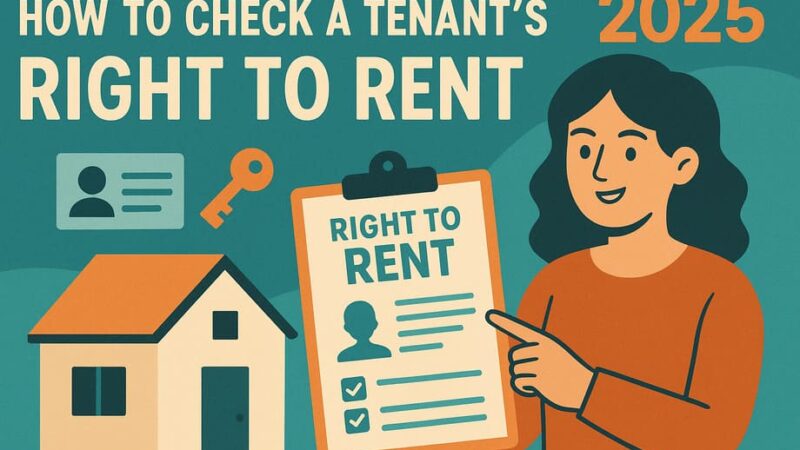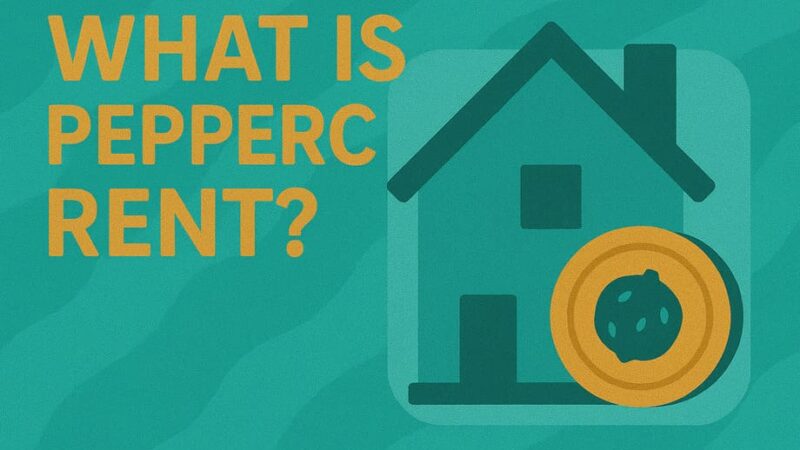How Often Should Landlords Paint a Property in the UK?

One of the most common questions in UK property rentals involves painting and decoration responsibilities. Tenants want to know if they can personalise their space, while landlords need clarity on their legal obligations and how often they should refresh their properties. Understanding these rules helps prevent disputes, protects deposits, and ensures rental properties remain attractive and well-maintained.
Painting and Decoration Rules for Landlords
The relationship between landlords and tenants around painting involves balancing property maintenance responsibilities with tenant rights and practical considerations for both parties.
Is There a Legal Requirement?
There are no strict legal rules about how often a private landlord must redecorate or repaint their rental properties. The deposit protection schemes suggest repainting every 3 to 5 years as general guidance, but this isn’t a legal mandate.
Landlords have a legal obligation to keep the property in good repair and ensure it meets safety standards, which includes maintaining the building’s structure and ensuring it’s safe and habitable for tenants. However, this obligation focuses on safety and habitability rather than aesthetic appearance.
What the law actually requires:
- Properties must be safe and habitable
- Paint must not pose health risks (no lead paint, peeling paint that could harbor mold)
- Properties must be in “good repair” but this doesn’t specify paint freshness
- Any repairs affecting walls (like fixing leaks or damp) typically require repainting the affected areas
When repainting becomes legally necessary:
- After repairs that damage existing paintwork
- When paint poses health or safety risks
- If existing paint contributes to habitability issues like mold or dampness
- When paint condition affects the property’s basic livability standards
The absence of specific legal timeframes means landlords have discretion over painting frequency, but practical and commercial considerations often drive more regular repainting schedules.
What “Good Condition” Means
Understanding what constitutes “good condition” helps both landlords and tenants navigate painting responsibilities and expectations around property maintenance.
Good condition for paintwork includes:
- Paint that isn’t peeling, flaking, or chipping extensively
- Walls that are clean and free from significant stains or marks
- Paintwork that doesn’t harbor mold, dampness, or health hazards
- Surfaces that contribute to a habitable, pleasant living environment
- Paint that isn’t so faded or damaged that it affects the property’s basic appeal
Normal wear and tear expectations:
- Minor scuff marks from furniture and daily use
- Light fading in areas exposed to sunlight
- Small nail holes from picture hanging
- General dulling of paint finish over time
- Minor marks that can be cleaned or touched up easily
Beyond normal wear and tear:
- Large holes in walls from improper hanging methods
- Excessive crayon marks, graffiti, or deliberate damage
- Smoke staining from cigarettes (beyond what’s considered normal)
- Pet damage including scratches or urine stains
- Unauthorized painting in colors that can’t be easily covered
Landlords are typically responsible for repainting at reasonable intervals, often every 3-5 years, or between tenancies to ensure the property remains attractive and habitable. This frequency helps maintain property value and tenant satisfaction while addressing normal wear and tear.
Factors affecting “good condition” standards:
- Property type and rental market (luxury vs. budget accommodations)
- Length of tenancy (longer tenancies may require mid-tenancy refreshing)
- Tenant demographics (families with children vs. young professionals)
- Local rental market expectations and competition
- Age and quality of existing paintwork
The key is maintaining standards that keep the property competitive in the local rental market while meeting basic habitability requirements.
Tenant vs Landlord Responsibility
Most Assured Shorthold Tenancy (AST) agreements restrict unauthorised modifications, and painting without approval can result in financial penalties and deposit deductions. Understanding the division of responsibilities helps prevent disputes and ensures both parties meet their obligations.
Landlord Responsibilities:
- Providing the property in good decorative condition at the start of tenancy
- Periodical redecoration of part or all of the property – every three to five years is fairly normal, more often if it’s an HMO
- Repainting after completing repairs that damage existing paintwork
- Addressing paint-related safety issues (lead paint, extensive peeling)
- Maintaining exterior paintwork as part of structural maintenance
- Repainting due to normal wear and tear over reasonable timeframes
Tenant Responsibilities:
- Getting landlord permission before painting or redecorating if you’re a private tenant
- Maintaining reasonable care of existing paintwork
- Cleaning walls and surfaces as part of general housekeeping
- Reporting damage or maintenance issues promptly
- Returning the property to its original state at the end of tenancy unless agreed otherwise with the landlord
- Paying for repainting if damage goes beyond normal wear and tear
Permission and Documentation Process:
- Secure written permission that specifies approved colours, quality standards, and restoration requirements
- Document the original paint colors and condition with photos
- Agree on painting standards and professional vs. DIY work
- Clarify responsibility for restoration costs at tenancy end
- Include painting agreements in tenancy documentation
Social Housing Differences: Council and housing association tenants can usually paint and decorate their own homes, with some social landlords providing small redecoration grants to tenants. This reflects the different relationship between social landlords and tenants compared to private rentals.
Dispute Prevention:
- Clear tenancy agreement clauses about painting and decoration
- Regular property inspections with documented condition reports
- Written communication about any painting permissions or requirements
- Photos documenting property condition at start and end of tenancy
- Professional mediation for disagreements about paint condition or responsibility
Tips for Landlords
Smart landlords approach painting strategically to maximize property appeal, minimize costs, and maintain good tenant relationships. Here are practical strategies for managing painting responsibilities effectively:
Timing Your Repainting Schedule: Many landlords recommend repainting once every five to six years, though if you have long-term tenants, it can be disruptive to redecorate during the tenancy. Plan repainting during natural transition periods like between tenancies or during planned maintenance periods.
Consider seasonal timing—spring and summer are ideal for painting projects due to better drying conditions and easier ventilation. Avoid painting during peak rental seasons when you need properties available for new tenants.
Cost-Effective Painting Strategies:
- Quality paint investment: Higher-quality paints last longer and provide better coverage, reducing repainting frequency
- Neutral color choices: Stick to neutral, appealing colors that won’t date quickly and appeal to broader tenant demographics
- Professional vs. DIY: Professional painting lasts longer and looks better, but DIY can save money for budget properties
- Bulk purchasing: If you manage multiple properties, coordinate painting schedules to benefit from bulk paint purchasing and contractor rates
Tenant Collaboration Approaches: A balanced approach can help keep long-term tenants happy and save money on redecorating costs by allowing tenants to make small changes to the property. Consider these collaborative strategies:
- Offer paint allowances for long-term tenants who want to refresh specific rooms
- Allow tenant painting with approved color schemes and quality standards
- Share costs for mutually beneficial improvements that increase property value
- Provide painting services as incentives for lease renewals
Property Maintenance Integration: Coordinate painting with other maintenance activities to maximize efficiency and minimize tenant disruption. Combine painting with carpet cleaning, appliance servicing, or other scheduled maintenance work.
Use painting opportunities to address minor repairs like filling holes, cracks, or surface damage that might worsen over time if left unaddressed.
Documentation and Communication:
- Maintain detailed records of painting schedules and property condition
- Communicate painting plans well in advance to existing tenants
- Document any tenant-caused damage that goes beyond normal wear and tear
- Keep receipts and photos of painting work for tax purposes and dispute resolution
- Include clear painting clauses in tenancy agreements from the outset
Market Positioning: Regular painting helps maintain property value and rental competitiveness. Well-maintained properties command higher rents, experience lower vacancy rates, and attract higher-quality tenants who are more likely to care for the property properly.
Consider painting as marketing investment rather than just maintenance expense—fresh paint significantly improves property photos for rental listings and creates positive first impressions during viewings.
Budget Planning: Budget properly and set aside money each month to cover the cost of periodical maintenance and repairs. Factor painting costs into your rental yield calculations and maintain reserves for planned maintenance.
Typical painting costs range from £300-800 per room depending on size, quality, and location. Professional whole-property painting might cost £1,500-4,000 depending on property size and specification.
Tax Considerations: Painting costs are generally tax-deductible as allowable expenses for rental property maintenance. Keep detailed records of painting expenses, including materials, labor, and any associated repair work.
Distinguish between maintenance painting (tax-deductible) and improvements that add value (capital expenses with different tax treatment).
Conclusion
The responsibility for painting rental properties typically falls on the landlord, as specified in most lease agreements, with repainting every 3-5 years being the general industry guideline. While there’s no strict legal requirement for painting frequency, landlords must maintain properties in good condition, and regular painting is part of responsible property management.
Key takeaways for landlords:
- Plan for painting every 3-5 years as part of routine maintenance
- Budget approximately £1,500-4,000 for whole-property professional painting
- Document property condition and any tenant permissions carefully
- Use quality materials and neutral colors for longer-lasting results
- Consider painting as investment in property value and tenant retention
Key takeaways for tenants:
- Always get written permission before painting, as unauthorized changes can result in deposit deductions
- Understand that you may need to restore original colors at tenancy end
- Report maintenance issues promptly to avoid being charged for resulting damage
- Take photos of property condition at move-in to document existing paint condition
Bottom line: Regular painting is good business practice for landlords and helps maintain property standards that benefit everyone. Clear communication and written agreements about painting responsibilities prevent disputes and ensure both landlords and tenants understand their obligations.
Whether you’re a landlord planning maintenance schedules or a tenant considering decoration changes, understanding these guidelines helps create successful, dispute-free rental relationships that work for everyone involved.
Last Updated on September 1, 2025 by James Cartwright







